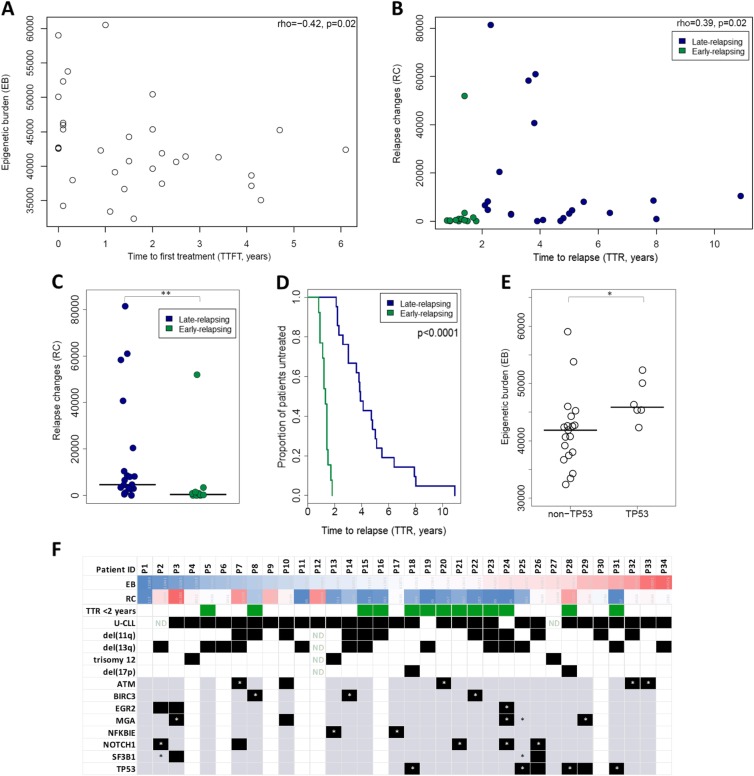Fig. 3.
Associations of the epigenetic burden and the relapse changes with clinicobiological characteristics. a Scatter plot showing the epigenetic burden (EB) (y-axis) and the time to first treatment (TTFT) (x-axis) and their correlation coefficients (Spearman rho = 0.42, p = 0.02) for all 34 CLL cases b Scatter plots showing both the relapse changes (RC) (y-axis) and the time to relapse (TTR) (x-axis) and their correlation coefficients (rho = 0.39, p = 0.02) for all 34 CLL cases. The early-relapsing cases are displayed with green and the late-relapsing cases with blue. c Dot plot with median showing the RC of the early-relapsing and late-relapsing groups which show significant differences (p < 0.001). d Kaplan-Meier curves for time to relapse (TTR), with the early-relapsing cases relapse significant earlier than the late-relapsing (Log-test, p < 0.001). e Dot plot with median showing the EB of CLL cases with TP53 and non-TP53 aberrations which display significant differences (p < 0.05). f Columns represent patients (n = 34) and rows genes or cytogenetic abnormalities. The color scale represents the number of DMCpGs from blue (low) to red (high). Regarding cytogenetic abnormalities, black boxes state the presence of the aberration and white boxes the absence. Regarding gene mutations, gray boxes state the existence of whole-exome sequencing (WES) data available for the respective genes and the absence of mutation; gray boxes with asterisk (*) state the presence of mutation detected only at the pre-treatment state, black boxes the presence of mutation at relapse, and black boxes with asterisk represent the presence of mutation detected both at pre-treatment and at relapse state. White boxes state no availability of WES data. ND, not available data; **p < 0.01, *p < 0.05

